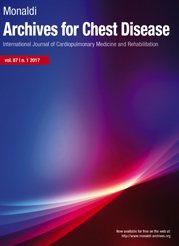Thoracic ultrasonography and pulmonary function tests in assessing lung function in acromegaly: a prospective matched case-control study
All claims expressed in this article are solely those of the authors and do not necessarily represent those of their affiliated organizations, or those of the publisher, the editors and the reviewers. Any product that may be evaluated in this article or claim that may be made by its manufacturer is not guaranteed or endorsed by the publisher.
Authors
Acromegaly is a rare disease characterized by elevated levels of growth hormone (GH) and insulin-like growth factor 1 (IGF-1), leading to changes in various organ systems. However, the effects of this disease on pulmonary function are often overlooked. Early detection of pleural thickness and pulmonary function changes could offer significant clinical value. This study aimed to assess the role of thoracic ultrasonography (TUS) and pulmonary function tests in evaluating functional lung changes in patients with acromegaly and to explore the potential of ultrasonographic pleural assessment in predicting pulmonary involvement. This prospective single-center study, conducted at Gazi University Hospital between April and September 2022, included 34 patients with acromegaly and 34 healthy controls. Total lung capacity, residual volume, and forced vital capacity were significantly higher in patients with acromegaly compared to the control group (p=0.004, p=0.004, and p=0.005, respectively), while maximal inspiratory pressure and maximal expiratory pressure (MEP) were significantly lower (p=0.001 and p<0.001, respectively). Additionally, pleural thickness was higher in the acromegaly group (p<0.001). In the acromegaly group, MEP was negatively correlated with GH (r=-0.398, p=0.033), and pleural thickness was positively correlated with IGF-1 upper limit of normal (r=0.349, p=0.047). In conclusion, our study suggests that TUS combined with pulmonary function tests may help detect subtle thoracic changes in patients with acromegaly. This is the first study to evaluate TUS in these patients, and further research is needed to validate our findings.
Ethics Approval
The local ethics committee approved this study (Date: 18.04.2022 and Decision No:291).How to Cite

This work is licensed under a Creative Commons Attribution-NonCommercial 4.0 International License.






